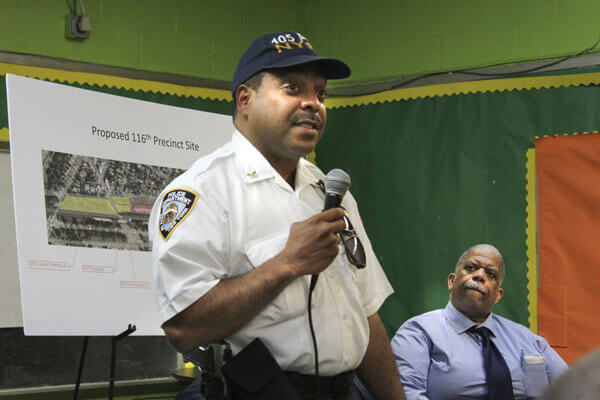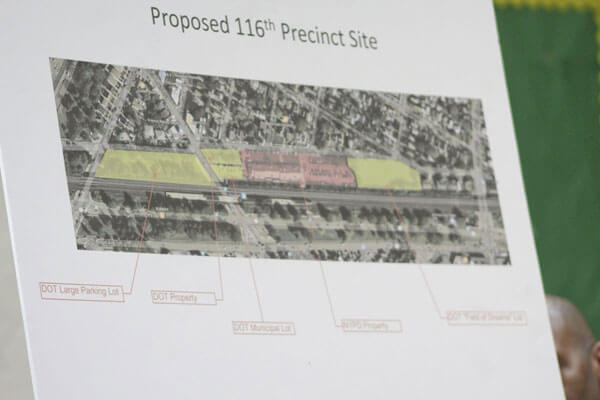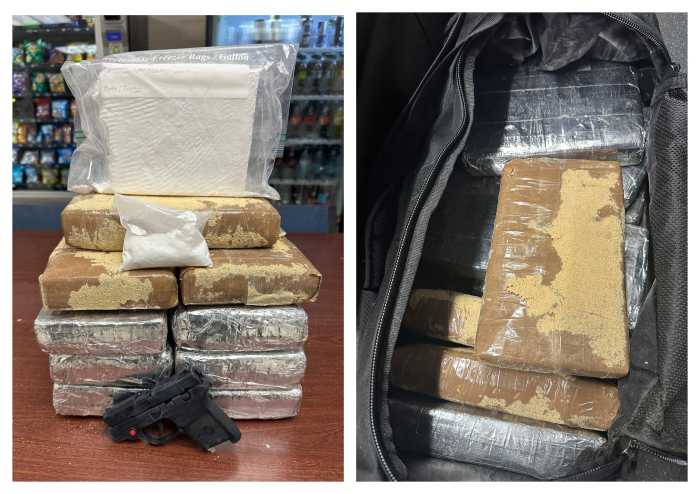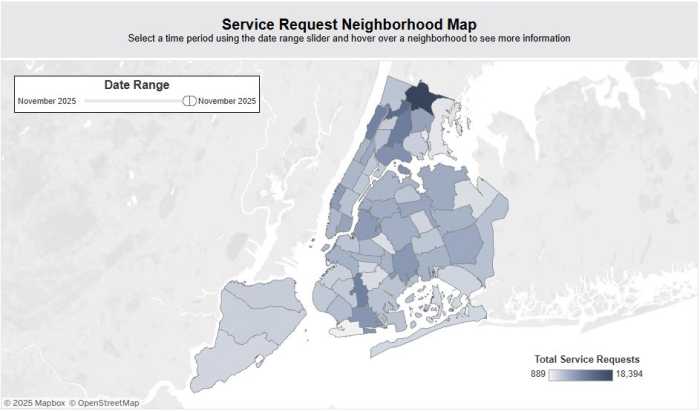By Naeisha Rose
Several elected officials met with southeast Queens block associations and St. Clare’s Academy for a town hall briefing last week at Birch Early Childhood Center in Springfield Gardens to discuss the new 116th Precinct.
The planned precinct will stretch from the middle of 242nd to 245th streets on North Conduit Avenue, and run parallel to the Rosedale LIRR train station, according to the NYPD Capital Construction Unit Director Philip Heller, who is overseeing the development.
An unused DOT parking lot will become a two-floor, green, sustainable site, projected to cost $70 million. It was rezoned specifically for the precinct, which is expected to take up 44,000 square feet. The design will include a basement, and union labor will be hired for construction, according to Heller.
The purpose of the new precinct is to give relief to the 105th Precinct and cut response times during emergency situations. The 105th Precinct is now responsible for nine neighborhoods: Queens Village, Cambria Heights, Bellerose, Glen Oaks, Floral Park, Rosedale, Springfield Gardens, New Hyde Park and Laurelton, according to its website.
“The 105 has a big area to cover and the 116th Precinct would obviously make that easier for us,” said City Councilman Donovan Richards (D-Laurelton) at the Aug. 3 meeting. “They have an unfair amount of turf to cover right now.”
The 105th Precinct has a response time of 6 minutes and 58 seconds compared to the city’s response time of seven minutes , according to Inspector Jeffrey Schiff.
The new precinct would employ as many people as the 105th and would likely have around 286 officers, 52 school crossing guards, and 20 to 22 civilians working with the precinct, according to Schiff. The new precinct would cover Laurelton, Rosedale and Springfield Gardens, the easternmost part of Queens.
Richards, who is on the Council’s Committee on Land Use, is negotiating with City Planning on getting a third recreational floor for the officers and a public facility within the site for residents to use and get to know police at the precinct.
“In this age where we are trying to bring the community and police together, what better way to do it?” Richards said about the addition of a community center. “Let’s also imagine a cop room where [the police] can have fun, eat donuts and drink coffee.”
Heller, who is responsible for the construction of police precincts in the city as well as the selection of architects, construction management firms and contractors for this project, was hesitant to give a timeline on the development, but eventually relented with a vague estimate.
“It’s a multi-year process,” Heller said. “Over four, less than 10,” based on the timeline for similar projects.
State Sen. Leroy Comrie (D-St. Albans) jumped in and explained the long timeline was a result of the rejected Design-build bill. This could have reduced the development schedule to two years.
The bill would have streamlined the process of erecting developments throughout the city, but it would have stifled competition among labor groups, according to Richards.
“I’m excited about seeing it happen in the next four years,” Comrie said. “If we had the Design-build, it would go a lot quicker, but unfortunately the Republican state Senate didn’t approve it.”
The project already has money and is in the design phase, according to Richards.
This means the plans for the precinct will be further reviewed by the city before progress can be made with the development, according to nyc.gov.
As a representative of the Zoning and Land Use committees, Richards hopes to cut that 120-day review process in half.
“Having more investigations and detectives is always good,” Richards said. “It’s going to improve the quality of life.”
Reach reporter Naeisha Rose by e-mail at nrose







































